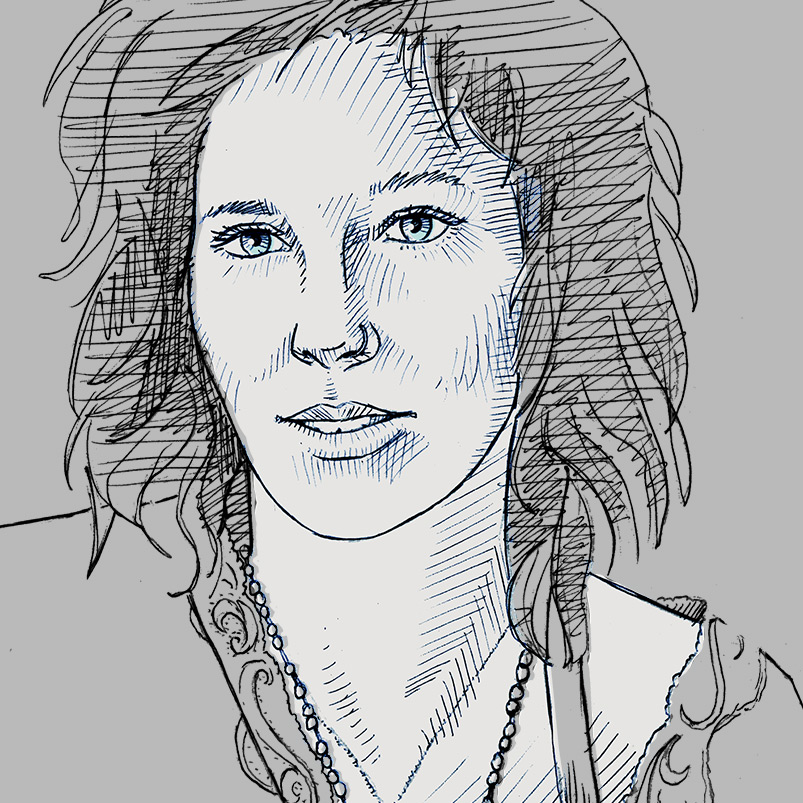A Conversation on Color and Psychology with Roxie Darling
The sole colorist at private studio Hairstory discusses the fine line between service and artistry and creating fleeting works

A counterpoint to the daytime hustle and bustle of the Wall Street neighborhood is the quiet oasis that is Hairstory, located many floors up in a discreet building. Shoes are taken off before entering the living room area, where sunlight streams in through big windows. Though it seems more like a beautiful apartment at first glance, the space is in fact home to a mini-revolution brewing within the hair industry.
Bumble and Bumble founder Michael Gordon conceived Hairstory as a creative outlet to showcase bold experiments in cut, color and styling—in an accessible manner appropriate for the digital age (just take a peek at their Instagram account) but also as a platform to put his brainchild in the front line of action. Observing a market over-cluttered with shampoo options—many filled with ingredients that strip natural oils and damage hair to encourage the purchase of conditioners and masks—Gordon went a different route. His goal: to preserve brilliant color and keep hair healthy and soft without any additional products using only detergent-free Purely Perfect Cleansing Creme. It’s used in every single transformation that takes place at Hairstory.
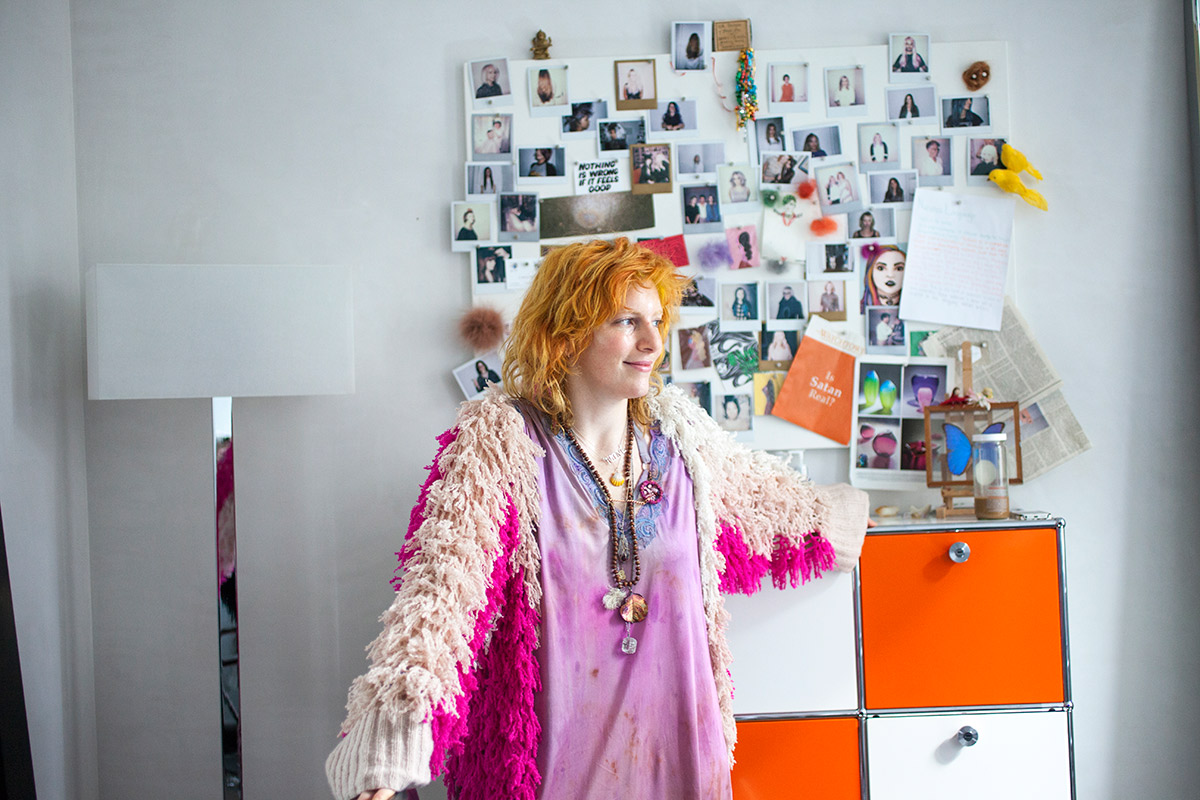
The effortless, radiant hues—from classic natural shades to the more adventurous, like amethyst or turquoise (or even both)—you see in Hairstory’s photos are the work of Roxie Darling, the sole hair colorist at the studio. Though just 27 years old, the Staten Island native has more than a decade of experience living and breathing hair color, with stints at Bumble and Bumble then Cutler salon in SoHo. Last week, Darling sat down with CH to give us a realistic look into her world of color and her role as an agent of metamorphoses. What’s most eye-opening is how many parallels her work has to the worlds of other creatives—from dealing with client expectation to the blurry line between service and artistry. One unique factor, however, remains: few work with such a volatile, sometimes unforgiving, and always ephemeral medium as hair.
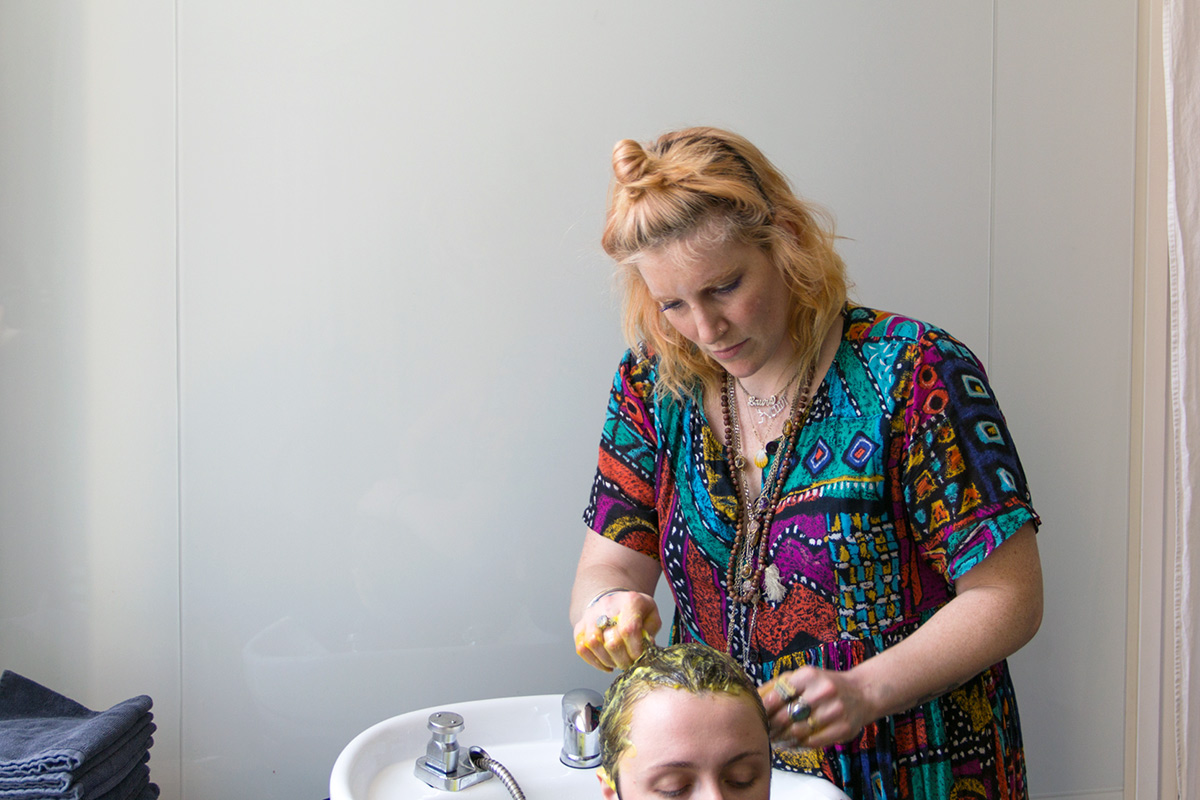
When you meet someone for the first time during a consultation, what are you immediately looking for?
I scan people. I just start looking at everything about them: all of their features, all of the details about them, their hair, their skin, their glasses, their jewelry. Because of the way that you’re trained—with hair color, it’s a lot about skin tone—I started looking at every detail of someone’s skin tone, which turned into looking at every detail of everything about someone.
Do you still “scan” people after you leave the studio, like on your subway ride home?
That’s how I operate! Because I was trained to that, that’s just what I do. I’m always looking for patterns on the train, on the street. I had a friend once tell me, “You know, you don’t really make eye contact that much.” I was like, “Yeah, it’s because I’m too busy looking at all of the other details on a person.”
When you’re doing this scanning, you find yourself silently critiquing bad hair color jobs?
No, no, no. I don’t, because I don’t want to fix it. I want to know how it got there. I’m more or less trying to figure out how they did it, and how I can do that.
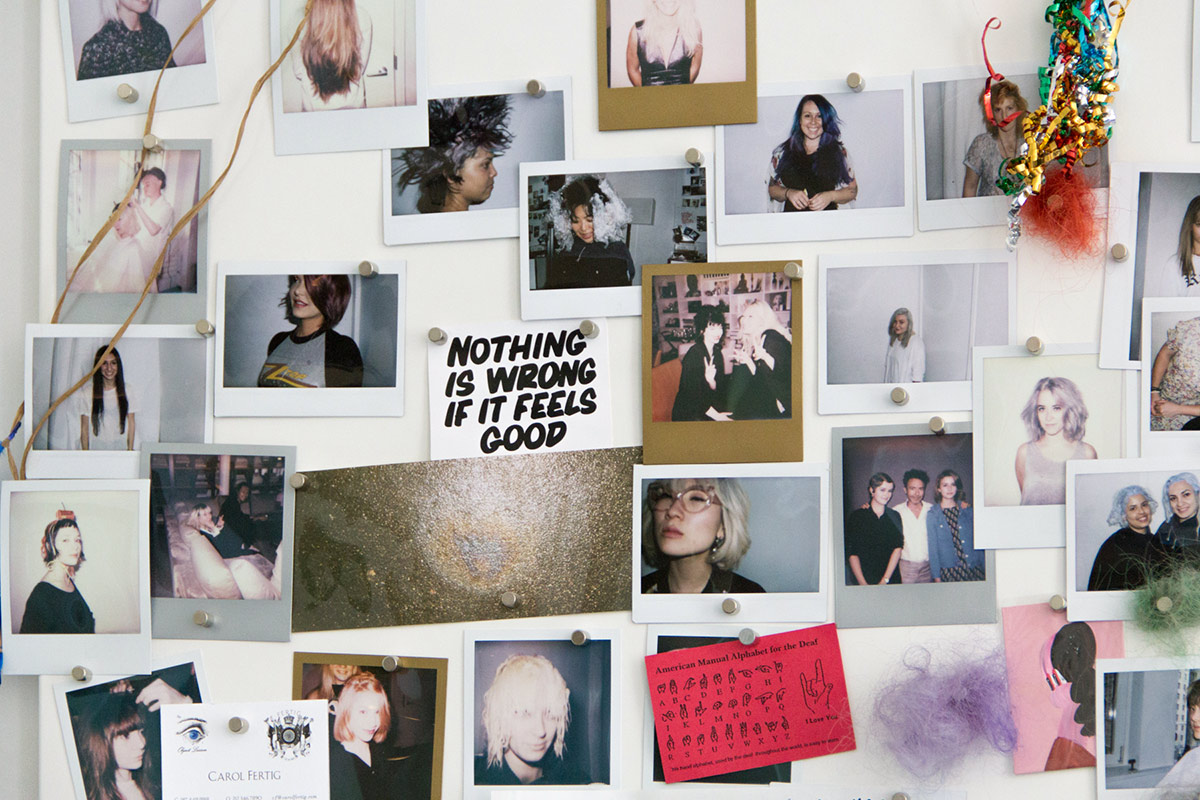
Where do you draw inspiration for new colors?
Everywhere—I mean, that sounds really cliché.
Be as cliché as you want.
I like that, thank you. That’s an important thing, what you just said: being as cliché as I want. Because working in an industry where everybody is trying to be so innovative, so original and so different—I think there’s a lot of truth to the fact that I draw my inspiration from everything, from nature to spotting patterns on the subway, camo greens, skin tone patterns. I’m inspired a lot by nature: a lot, a lot, a lot. Because when I’m connected to nature, I feel very certain of myself.
I also draw a lot of my inspiration from people who do their own hair. That’s why I say, on the train, I’m not trying to fix people’s hair. I’m really trying to figure out, how did this 17-year-old girl get this super-weird color? How did they get there? What did they do? What’s kind of trending right now is super-nuanced, interesting colors. Some of the people that really inspire me are 80-year-old women. Because they try to cover up their white hair and it’s really difficult to do; and they get some of the most interesting colors.
All of my color theory knowledge is from experience. So when I see certain hair colors on people on the street—and in the subway, because the lighting is so terrible on the train, it’s not forgiving, so it gives a very clear definition of what something actually looks like.
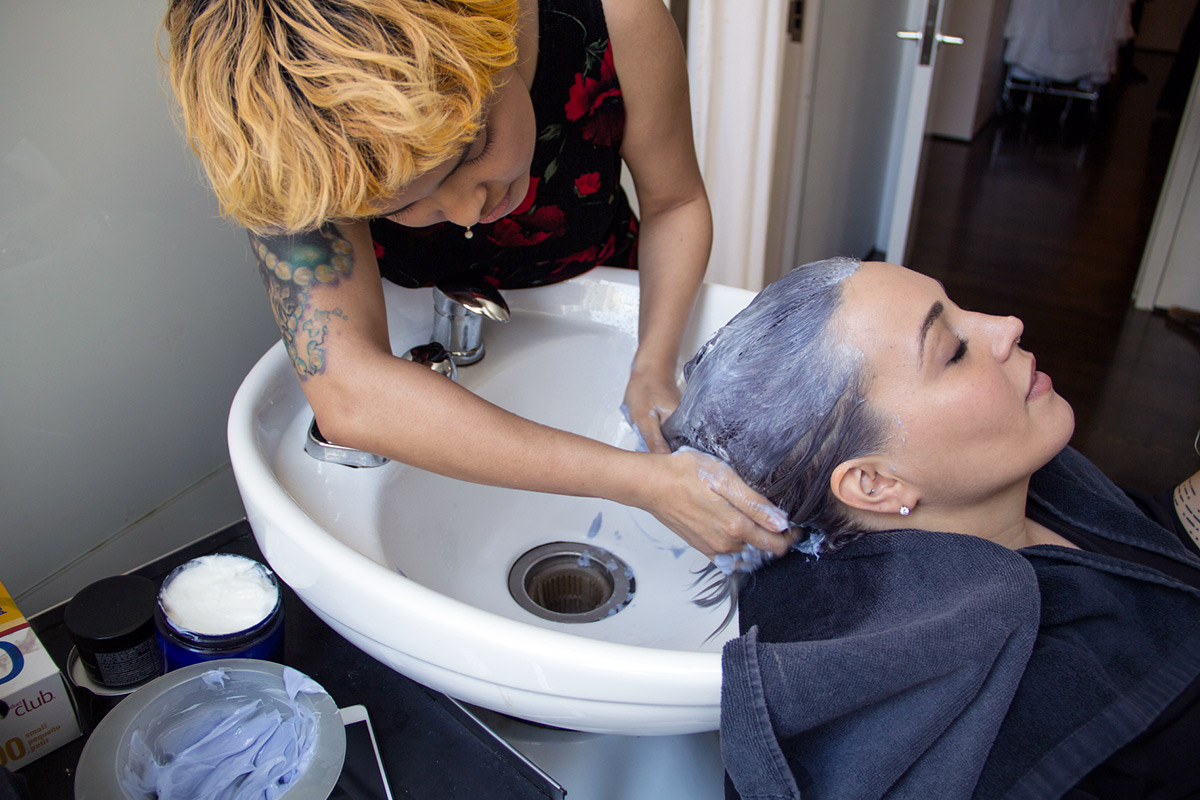
What have you learned from working with the same medium—hair—for more than 10 years?
As much as I can set a good intention for a certain color to happen a certain way, there are so many factors because you’re working with a natural fiber—and chemicals. And the way that natural fibers react to chemicals is not a promised reaction. It could just break, or it could do the thing that you hope it’s going to do. It’s mysterious because as much as you put certain activators with the pigments in a bowl, mix it up, and put it on someone’s head—you really don’t know what’s going to happen.
And from your experience, you can hypothesize that it’s going to be a certain color, but other things come into play—like if someone is a swimmer, or if someone lives in a really old building. Then there are all these minerals in the water that build up and catch on to this porous natural fiber and then when you put ammonia on them—they don’t mix well. It could start smoking because of the chemicals already in the hair. Or people who live upstate and the water in the house is from a well; there are a lot of minerals in unfiltered water.
So my approach toward hair has evolved, because I’ve learned how it lives; I’ve gained so much respect for it. I’ve broken hair, I’ve saved hair. It’s been such a stable thing in my life too, for the last 10 years. I’ve been building this relationship with this form of self-expression and this way of helping people. I’ve worked really hard to thank it, in a way.
And mistakes happen.
Mistakes happen all the time! The way to handle it really well is to be really present. As long as you’re present—even if you’re fucking up, you can save it somehow.

Has the nature of your job changed over time?
I don’t think it’s ever been as strong of a role in the beauty industry as it is now. The term “hair colorist” has risen especially in the last 10 years, when we’ve evolved aesthetically to not want lines in the hair anymore; learning about these techniques like hair painting and bleaching. It gives hair colorists and hairdressers the ability to have more control over the product that they’re putting in the hair; which ultimately helps them control the end result. Whereas for years, the technique of going lighter involved weaving out certain pieces and wrapping them in a foil packet—which you could “predetermine” what the end result would be, but… [now] it’s evolved and taken hair color to the next level. People are starting to really appreciate a colorist.
Has the approach to hair care also changed alongside this evolution of hair color techniques and technology?
I used to tell this story: imagine—because hair color isn’t cheap, especially in New York. It’s like a lot of money; you could buy a pair of shoes with that salon visit, you could buy yourself a whole new outfit depending on where you shop. Anyways, I would tell people, imagine going into Bloomingdale’s (because I worked in Midtown) and buying yourself a blouse. How are you going to take care of that shirt? You wouldn’t buy a $200 shirt and then throw it in the washer, then the dryer, every day or even every few days. You just came here and spent $200 on your hair—why would you wash it every day? You’re just going to ruin it.
So I would just tell people not to wash their hair; just rinse it and use a little conditioner to get the smell out. That’s what I did for five years before I met Purely Perfect. The Cleansing Creme really nurtures the hair well. I can’t tell you how many times I’ve fried my own hair and have brought it back because I consistently use [it]. It’s really good for people who like to change their hair a lot because it’s designed to keep the hair functioning at its most optimal level. That’s the intention behind the product.
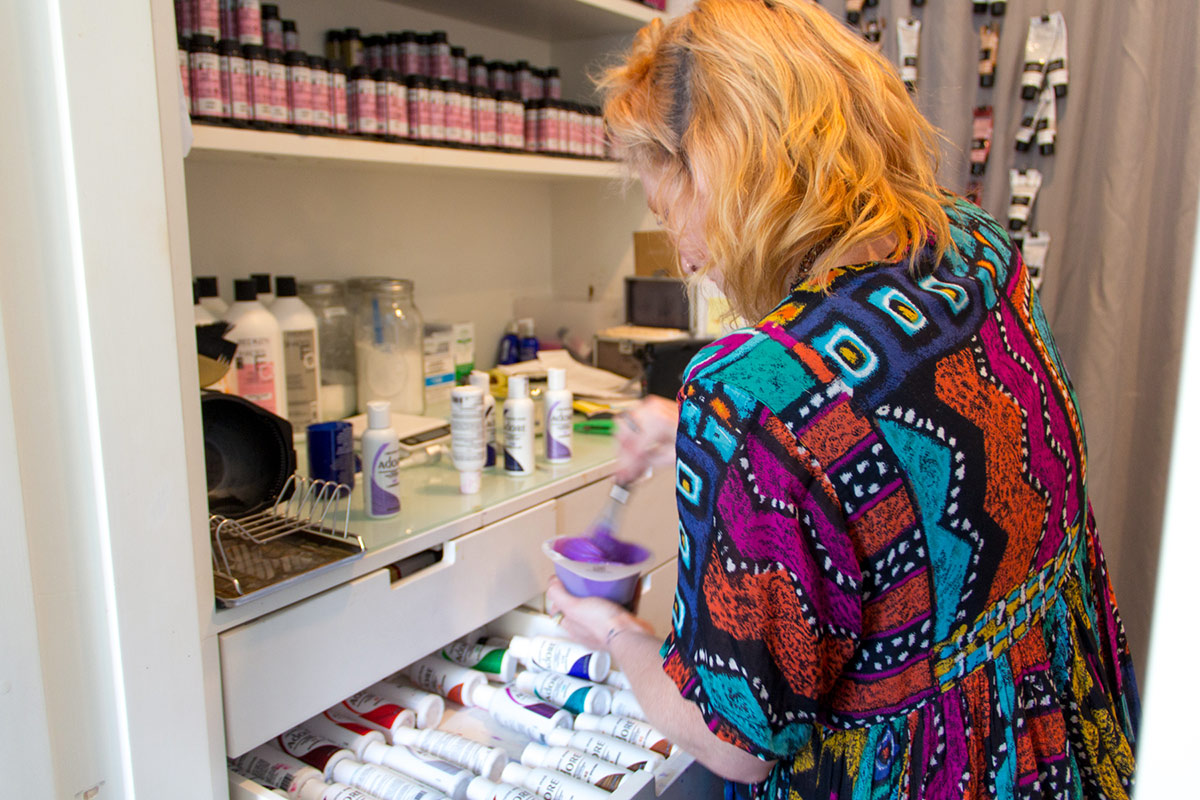
You’re known for your bold color transformations; how can color change people, beyond just an aesthetic difference?
It’s a beautiful thing to be a part of and watch. All colors, they stimulate the brain and they move energy around, and move thoughts around in people’s brains and in their hearts. I think people can change with hair color because also, when you show up to your appointment and you sit there for however many hours (it can be 30 minutes, it could be six hours)—you’re showing up for yourself, and you’re making an investment in yourself. I think that when anyone does make a decision to spend time and invest in themselves, it makes them better. So, the color and the showing up for yourself, in my opinion, they go hand in hand.
When people want to try unnatural hair color for the first time, is there a lot of hand-holding involved?
It’s medium hand-holding. I kind of have to prep people—like when a mother bird kicks them out of the nest and they have to learn how to fly on their own. I try to mentally prepare people for what life is going to be like when they walk out with a new color. I’m pretty maternal and I can take care of people when they’re in my space.
When I make someone’s hair a certain color, it makes other people react a certain way. The person who has the blue hair or the pink hair, they’re received by other people in a certain way. If someone says, “I want to have pink hair,” I tell them how people are going to react to them.
How is pink different from blue?
Pink is very warm, very feminine and very safe. Blue is very safe as well, but because it’s a cooler color—it does exactly that. When I say something is a cool tone, it gives off a cool feeling. A warm tone gives off that warm feeling. Green is cool. But that’s why it’s very important that the tone and the color that you give to someone is appropriate for their personality. Because I require a consultation before every appointment—the screening thing that I do—you can really tell [what their personality is], even by a person’s body language.
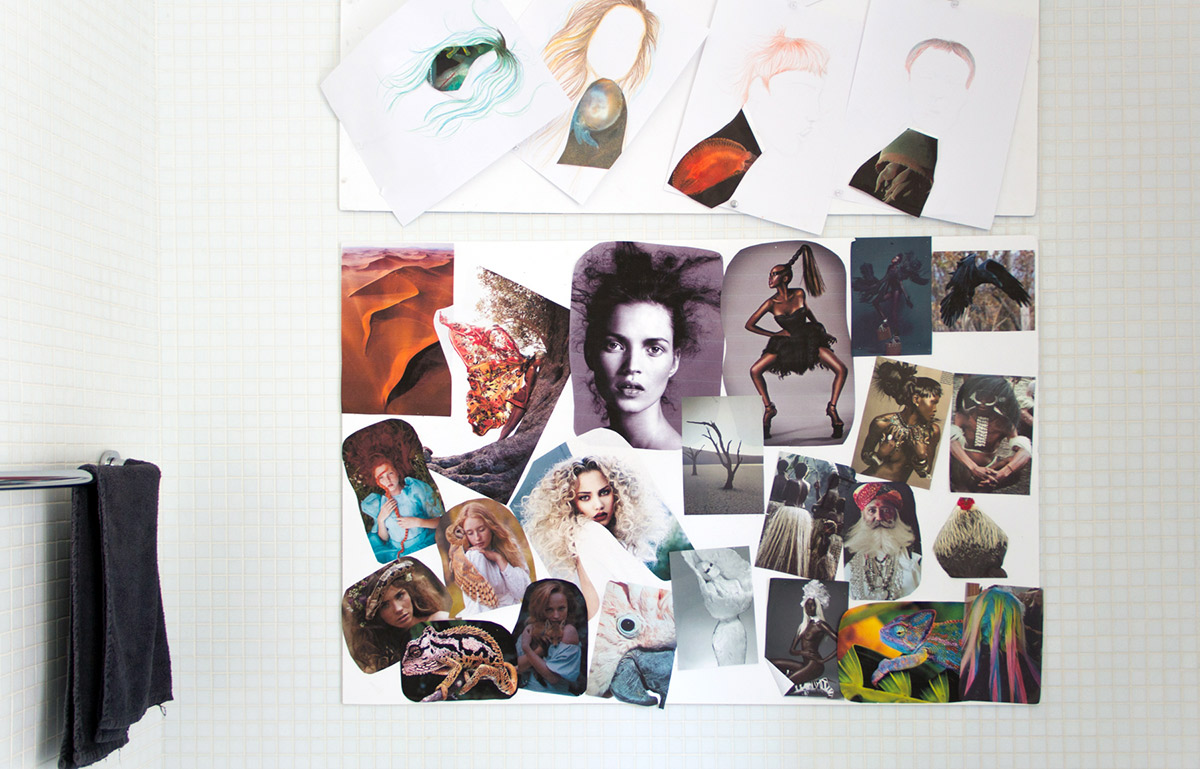
What are your thoughts on male color? Does your process differ?
I’m really good at talking men out of coloring their hair [laughs]. (That’s the thing: I’m really good at either talking people into it or talking people out of it.) If you’re using it as a way to enhance your personality, whether you’re a girl or a man, I think that’s great. That’s amazing when you’re using it as a tool to better yourself—or to balance yourself. If you’re using it to hide something that is true about you—whether you’re a male or a female—that’s when it’s tricky for me. I think that men who want to cover their grey hair, they’re stupid because they [usually] look beautiful with their grey hair.
Also because as we age, and we get grey hair, our complexion changes to suit the grey hair. Some older people, or even young people who have a lot of grey hair, would almost look better with their natural grey hair than they do with the color that they’re covering their grey hair with. Like one of my aunts: she has very pink skin and she covers her grey hair, and I fee like this harsh color makes her look more red. When she’s all silver, her skin looks amazing because the silver complements what has happened to her skin in the last sixty years that she’s been alive.
Back to the men’s color, I think that really doing it for the right reason—of wanting to enhance something about yourself, is a huge factor in male and female hair coloring.
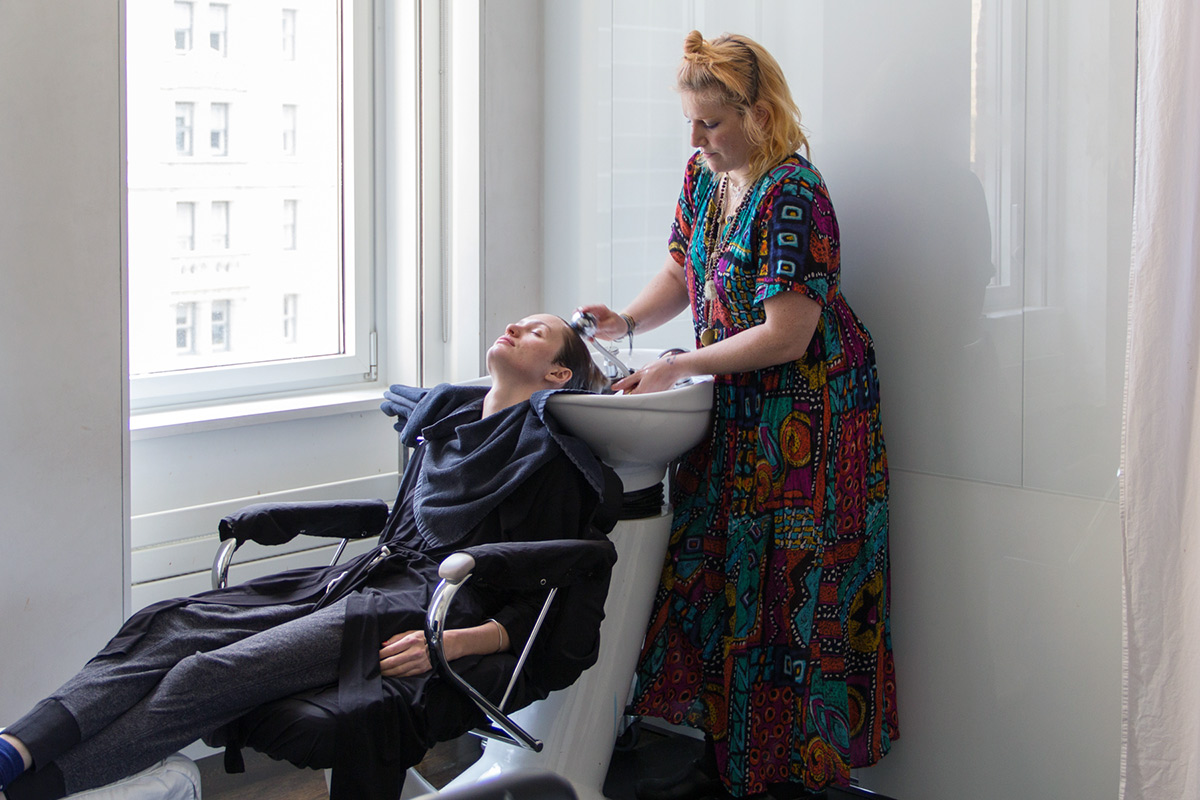
Has the unique nature of Hairstory given you more room to experiment? How has it influenced your growth as a creative?
I used to think that I was experimenting by trying one new thing. But really, every single head that comes in is an experiment. I like to use the word “practice.” I see probably about five people, on average, per day. At most salons I worked at, I was asked to see eight to ten people a day.
But since I’ve come to work in this space, it’s allowed me to create my own schedule. I still work a lot, but it’s allowed me to practice the philosophy of intention and presence, and it’s been a really healthy environment for me. I feel that, not only professionally, but personally I’ve been able to grow and I’m thankful and grateful. I got out of the train this morning and I was like, Yes! I get to that awesome place again, and do what I love, again! It’s one more day that I get to do that.

As a hair colorist, are the lines becoming blurred between providing a service and being an artist?
I am an artist because of what I’ve learned from being a hair colorist. I would like to think that what I do for people is art—but it’s not. As much as I would like to think that—and lots of people tell me that it is—in my mind, it goes back to being a service. It’s this kind of weird mental battle that I have. Because I don’t want to just start calling myself an artist.
I’m hoping to use everything I’ve learned from my experience with working with hair color to ultimately come out as a fine artist. I’ve always known I wanted to break into the art world more than the editorial, fashion, beauty world.
I feel like it’s a similar mental battle a lot of creatives might have; for example, graphic designers or illustrators who do commercial work for big name clients.
My artist statement comes from being able to use and manipulate color in many different ways, whether it’s dyeing people’s hair or dyeing my clothes or painting at home or making something. Being able to know, from my experience as a hair colorist, how to use color in the form of dye or paint or different mediums. I guess I would consider myself as an artist, as a hair colorist, because I’m making something for someone that’s going to stimulate other people and make them use their brains and tune in and make them think. There’s a fine line.
Being a hair colorist is like being an artisan—because someone is coming and paying you, and they want your creativity within the realm of what they’re asking for. So “artisan,” I think is kind of the word, more. Which is amazing because that’s an artist who has a craft.
And unusually for an artisan, your crafted works don’t last very long—they’re ephemeral.
It’s so hard to say it’s art because it changes in ten minutes, when you come out of here, because it’s a natural fiber! It’s fleeting.
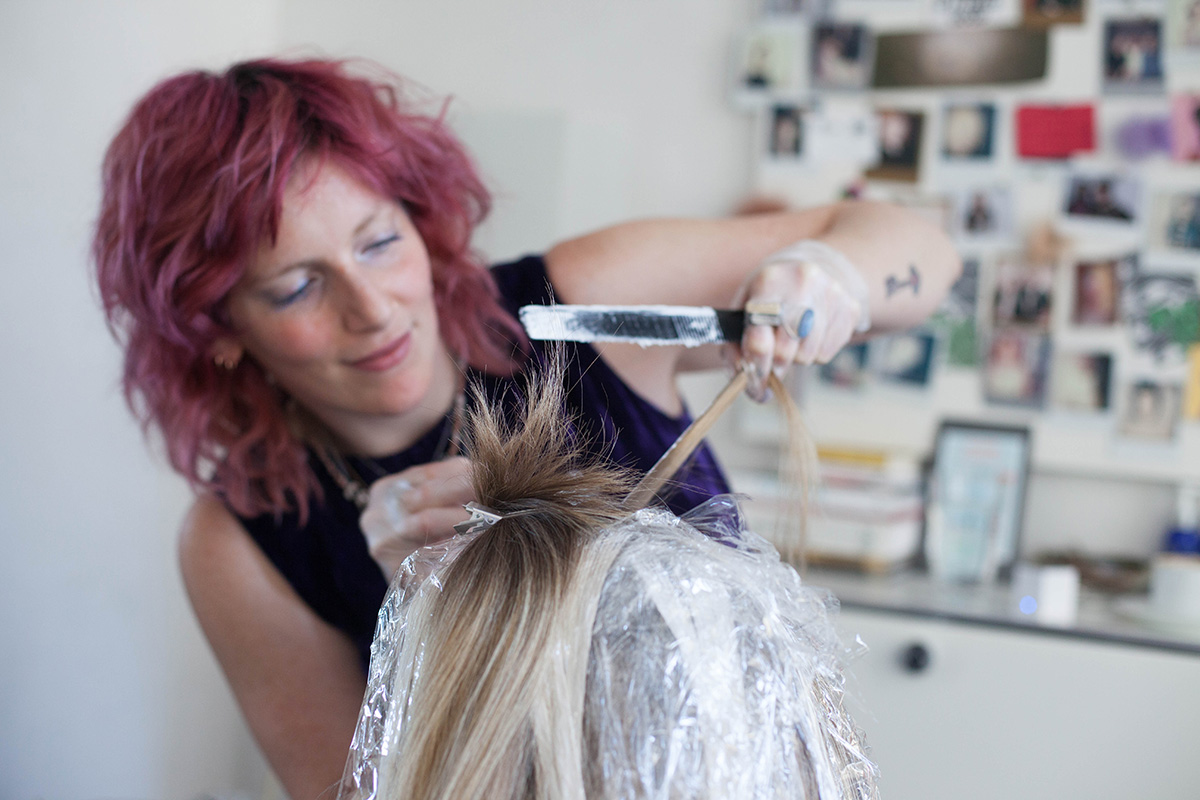
Are you constantly considering not just the finished color job, but its future and how the color will change over time?
That is a huge part of my thought process, and a huge part of the hand-holding. You have to break it down for the person, what it’s going to be like in two weeks, in two months, what it’s going to be like in four months, in six months, in eight months. Part of what I do is I imagine what’s going to happen and I try to tell the person. Because even if you’re someone who is “low maintenance” and only want to get their hair done every six months—but they don’t want it to look brassy, I’m like, “Ok, well, that’s impossible.” Because these fake colors are really only designed to live anywhere from four to six weeks. An artificial color molecule that is being put into the hair is not made to really substantially live for a long time.
Are you able to grant everyone’s wishes in their hair color, or do you have to disappoint them from time to time?
I’m a human—it’s almost too much pressure to put on yourself to promise people the world. You have to under-promise and over-deliver. I can do a lot, and I’ve done a lot—but ultimately, as a hair colorist, you are still put in a position to perform a service. That’s why I try to be very honest from the beginning; I don’t want to say yes for the sake of saying yes. I would rather be like, “Nope!” and have them be excited or surprised when it actually turns out better than I thought it would.
Roxie Darling sees private clients at Hairstory studio. There are also casting opportunities. Appointment inquiries can be submitted to thetenthfloor[at]gmail.com.
First and last two images courtesy of Hairstory, all other images and cover by Cool Hunting
